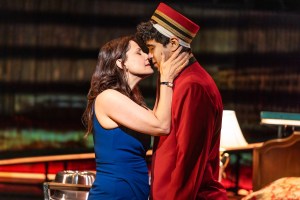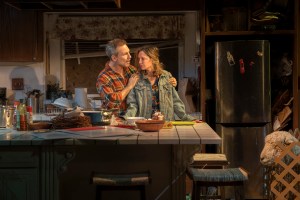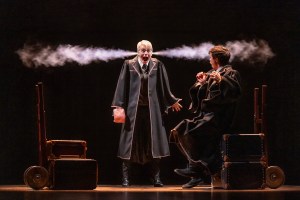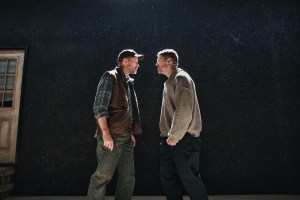Frasier Cocreator David Lee on Can-Can, Camelot, and 11 Years of 22-Minute Plays
David Lee follows up his Broadway-bound ”Can-Can” with a pared-down ”Camelot” at New Jersey’s Two River Theater.
When you've had as much success in television as Wings and Frasier cocreator David Lee, it's hard to shake "TV guy" from your title. Yet those who have been mourning the end of their weekly tossed salad and scrambled eggs know very well that it's been a decade since Lee's last turn at the tube.
"If you were a plumber twelve years ago but you've been an electrician for the last twelve years, would they still refer to you as 'the plumber'?" he asked. It seems they would, even though Lee, for the past ten years, has been successfully rewiring and directing classics from the archives of musical theater.
Just this season, he has been peppering the state of New Jersey with his revamped musicals. While his revival of Cole Porter and Abe Burrows' Can-Can was wrapping up performances at the Paper Mill Playhouse, Lee took the time to chat with TheaterMania about his eight-person adaptation of Camelot, set to open at Red Bank's Two River Theater on November 15. His modest rendition boasts no pointy hats, coats of armor, or men in tights, but in other ways, he's returning to the show's roots when Arthur, Lancelot, and Guinevere were just three kids in love.
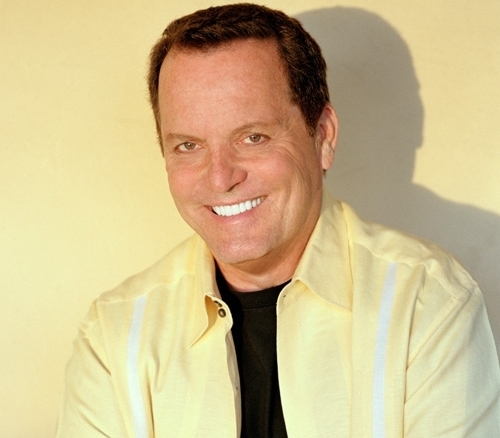
How did you end up so embedded in this season's New Jersey theater scene?
Opportunities present themselves and I take them. Last year I directed a production of Present Laughter at the Two River Theater Company, because I was friends with the artistic director, John Dias, and I had such a great time, we vowed to do something together again. And he said, "What do you have?" And I said, "Well, I have this eight-person version of Camelot," and he looked at it and said, "I really want to do this." Almost on a simultaneous track…Paper Mill Playhouse said they were very interested [in Can-Can] and they wanted to do it to open their season this fall. I only had twelve days off between opening night of Can-Can and beginning rehearsal on Camelot. Out of the can-can, into the fire! [laughs]
Did you approach Camelot and Can-Can in similar ways?
Can-Can has what I consider a really terrific score and the basis of a really interesting story, but in its original execution, with all due respect to [original book writer and director] Abe Burrows, it just doesn't work. It's one of the reasons why it's seldom revived. Joel Fields and I just took a new approach to making a new book [that made] more sense so you were more engaged with the characters and there were more things at stake than just a crazy night out in Paris.
Camelot's a little different, in that so much of Lerner's writing is just wonderful. But over the years, it morphed into a story about an old guy who gets cuckolded by his young wife when the handsome Frenchman comes to town. The reality is this is a story about three young people with their youthful ideals coming crashing into reality. The major part of what I tried to do with this version of Camelot is clear away a lot of the clutter, cast young vibrant sexy people in the three leads, and follow their story. And I realized I didn't need a whole chorus of people or fancy scenery. I could do it on a simple set with just very simple costumes…and all of a sudden I went, oh, I think there's an important, touching, sexy story here.
Was theater a big part of your life before you entered the world of television?
Oh yeah. I performed in a ton of musicals, I studied theater in my undergraduate work, I did graduate work in directing theater — then I took a side trip into television for a couple decades. [laughs] I still look at the television stuff as a detour. I don't want to downplay what I did because I am proud of it, but I'm a theater person. I have been ever since I was young.
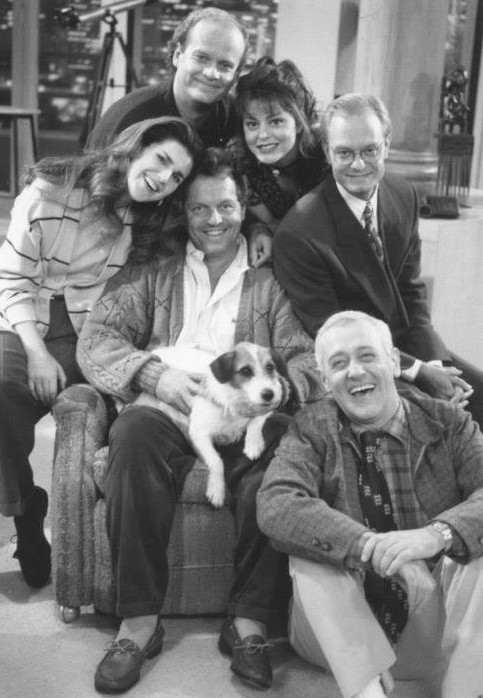
Frasier was very theatrical in and of itself with its long, fleshed-out scenes. Did you consciously bring your stage sensibilities to that show?
Absolutely. That was a real conscious choice on our part. At the time, Seinfeld was really big. Seinfeld is a wonderful show and it broke amazing ground, but it really encouraged the use of very short scenes where you would just have a brief scene and you would get to a joke and you would cut to the next short scene. With Frasier, my writing partners and I consciously said we were going to fight what we call "short-attention-span theater" and really try to make the scenes as long as we could. In one case, we managed to get a whole episode that just was one large scene. It remains one of my favorite episodes, and I think it's because it's so inherently of the theater. When I was doing Frasier, I got to do a twenty-two-minute play every week.
Do you think audiences would be receptive to that kind of show now?
I think the audience can still handle them. Sheldon Harnick used to write on his shaving mirror, "people beat scenery." I think people beat style too. If you're engaging people in characters and in their stories and they care about those people, they'll sit and listen as long as you can maintain that. The short-attention-span theater stuff is sometimes done by writers out of fear that they're going to be boring. All they really have to do is be engaging.


